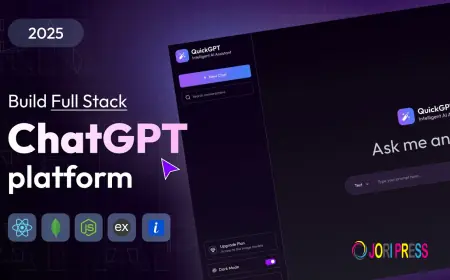Cross-Platform Mobile App Development in 2025: A Complete Guide
In the fast-paced digital landscape, businesses can no longer afford to develop apps for just one platform.

Users expect seamless access across iOS, Android, and even web applications. This is where cross-platform mobile app development comes in—a strategy that allows developers to build a single app and deploy it across multiple platforms.
In 2025, cross-platform development has evolved significantly, offering faster time-to-market, reduced costs, and near-native performance. This article explores the benefits, challenges, and best practices of building cross-platform apps today.
What Is Cross-Platform Mobile App Development?
Cross-platform development is the process of creating a single codebase that runs on multiple operating systems (primarily iOS and Android). Instead of building separate native apps, mobile app developers use frameworks that allow code sharing while still delivering a native-like experience.
Popular frameworks in 2025 include:
-
Flutter (Google’s UI toolkit, widely used for mobile, web, and desktop apps).
-
React Native (Facebook’s framework for building native-like mobile apps with JavaScript).
-
Xamarin (Microsoft’s .NET-based solution for cross-platform apps).
-
Ionic & Capacitor (good for hybrid apps with web technologies).
Why Businesses Choose Cross-Platform in 2025
1. Faster Time-to-Market
With one codebase, apps can be developed and launched faster compared to building separate native versions.
2. Cost Efficiency
Developing and maintaining one app is far more cost-effective than managing multiple native apps.
3. Consistent User Experience
Cross-platform frameworks ensure a uniform look and feel across devices, improving brand identity.
4. Access to Wider Audience
Deploying on both iOS and Android at once maximizes reach, which is critical in today’s competitive market.
5. Easier Maintenance & Updates
Updates can be rolled out simultaneously across all platforms, reducing downtime and ensuring users always have the latest version. Mobile app developers uses best practices in this scenario, with informing clients in prior and make sure to roll out this at less peak time.
Challenges of Cross-Platform Development
While the benefits are strong, developers must address challenges:
-
Performance Gaps: Though improved in 2025, some apps requiring heavy graphics (like gaming) still perform better natively.
-
Limited Access to Device Features: Cross-platform frameworks may lag in supporting brand-new device features immediately.
-
Complex Testing: Developers must test across multiple platforms and devices to ensure smooth performance.
Best Practices for Cross-Platform App Development in 2025
-
Choose the Right Framework
-
Flutter for high-performance UI.
-
React Native for a wide ecosystem of libraries.
-
Xamarin for enterprise-level apps.
-
-
Prioritize UI/UX Design
Even though code is shared, adapt designs to match the platform’s user interface guidelines (e.g., Material Design for Android, Human Interface Guidelines for iOS). -
Optimize for Performance
-
Use native modules when necessary.
-
Minimize unnecessary background processes.
-
Optimize API calls and caching.
-
-
Integrate Emerging Tech
Cross-platform apps can still leverage AI, AR/VR, and IoT integrations by using plugins and APIs. -
Regular Testing Across Devices
Use automated testing tools and real-device testing to ensure smooth performance across multiple screen sizes and operating systems.
Future Trends in Cross-Platform Development
Looking ahead, several trends are shaping the future of cross-platform apps in 2025 and beyond:
-
Flutter Dominance: With continuous Google support, Flutter is emerging as the leading framework for mobile, web, and desktop.
-
AI Integration: Cross-platform apps will increasingly embed AI for personalization, chatbots, and predictive analytics.
-
5G-Enabled Experiences: Faster networks will allow cross-platform apps to deliver real-time gaming, AR shopping, and video streaming.
-
Wearable & IoT Compatibility: Apps won’t just target phones—they’ll integrate with smartwatches, smart homes, and connected cars.
-
Low-Code/No-Code Platforms: Businesses will adopt simplified app development tools, allowing non-technical teams to build functional cross-platform apps.
Conclusion
In 2025, cross-platform mobile app development has matured into a powerful strategy that balances speed, cost, and performance. While it may not fully replace native development for highly complex or performance-heavy apps, it is the go-to choice for businesses seeking scalability and wider market reach.
By choosing the right framework, prioritizing user experience, and adopting emerging technologies, businesses can deliver apps that perform seamlessly across devices while saving time and money.
For startups and enterprises alike, cross-platform development is no longer just an alternative—it’s a strategic advantage in the evolving world of mobile technology.
What's Your Reaction?
 Like
0
Like
0
 Dislike
0
Dislike
0
 Love
0
Love
0
 Funny
0
Funny
0
 Angry
0
Angry
0
 Sad
0
Sad
0
 Wow
0
Wow
0



















































